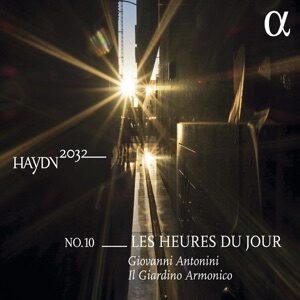Having roundly trashed the previous volume in this series, containing an absolutely vile account of the “Farewell” Symphony, among other disappointments, I’m pleased to report that this account of the early “Morning, Noon and Night” trilogy makes a far more positive impression. It could be that the concerto grosso style of multiple solos in each work gives the players an incentive actually to enjoy what they’re doing and clearly differentiate between melody and accompaniment, or maybe the need for less Sturm und Drang histrionics tempers Il Giardino Armonico’s habitual tendency towards timbral crudeness. Either way, the result is lively, fresh and pleasing, with especially telling contributions from the solo flute in “Le Matin,” the horns everywhere, and a concluding “La Tempesta” in “Le Soir” that doesn’t try to be something it’s clearly not. In “Le Midi,” the central recitative and aria also has an appropriately operatic quality, with the solo strings singing out as fulsomely as their period instruments will permit. It seems this series is back on track.
With that said, the coupled Serenata Notturna by Mozart–a generous and apt complement to the “times of the day” concept–makes a far less favorable impression. Haydn, as we all know, can take a bit of roughing up. He was the country kid who turned his humble origins to excellent effect without ever trying to disguise them. Mozart’s urbane elegance, even here in this early work, is another matter entirely. I find this lumpish, jerky approach to the music thoroughly unpleasant. I mean, it’s difficult to wreck the opening March, but the enthusiastic horns and timpani have to be matched with a similar weight of tone from the strings, and here they just sound anemic. The concluding Rondeau, with it’s “call and response” main theme, needs more room to breathe, a more impactful tutti sound, and greater attention paid to that special Mozartian cantilena that’s never absent from anything he wrote. Yuck. Get this for the Haydn, and for an interesting lesson in the differences between the two composers, proving that one size definitely does not fit all.
































